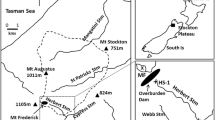Abstract
A titration based model (DeAcid) has been used to predict treatment dose and times for reacidification for CaCO3-treated lakes in the Living Lakes, Inc. (LLI) aquatic liming program. Water quality constitutents (pH, ANC and Ca) were used to measure the effectiveness of the dosing model and reacidification rates. Data from 22 lakes or ponds in 5 northeast states have been collected since June 1986. With few exceptions, pH and ANC values ranged from 4.5 to 6.5 and −30 to +65 ueq L−1, respectively, in untreated sites and 6.5 to 7.8 and 120 to 300 ueq L−1, respectively, in sites approximately 30 days after treatment. Changes in Ca concentration levels have been used to evaluate the utility of the dose model for treatment of both inland and coastal waters. For coastal, seepage lakes application of a single-box mass transfer model to observed post-liming changes in ANC and Ca adequately simulates lake response.
Similar content being viewed by others
Rights and permissions
About this article
Cite this article
Adams, T.B., Brocksen, R.W. Dose-response relationships for the addition of limestone to lakes and ponds in the Northeastern United States. Water Air Soil Pollut 41, 137–163 (1988). https://doi.org/10.1007/BF00160349
Issue Date:
DOI: https://doi.org/10.1007/BF00160349




